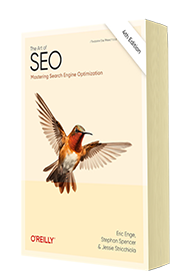The Search Is On
The SEO landscape is constantly shifting. What used to be considered a best practice two years ago may very well be irrelevant today, simply because Web-based technology and search engine algorithms are always evolving.
Plus, a “best practice” isn’t necessarily a hard and fast rule for every site. What SEO experts proclaim to be critical advice might be invaluable for one site, and a waste of time for another.
How do you navigate your way through the promises, uncertainties, and red herrings of SEO best practices? Testing is the key to achieving scalable SEO nirvana on your site. By monitoring and retesting specific SEO enhancements, you validate their benefit and appropriateness for your e-commerce site.
While conversion may be the hot topic for online retailers and marketers, having a well-optimized Website and e-commerce platform that facilitates your pages being efficiently crawled, indexed, and ranked is equally important. With a little upfront polishing, your site can really shine, offering its products to searchers and devoted customers alike.
By implementing SEO best practices, with particular emphasis on those reaching the “lowest hanging fruit” — you can extend your brand reach significantly through organic search.
Consider these proven strategies as a starting point for your SEO testing regimen.
CRITICAL Best Practices
301 Redirects: In SEO, duplicate content is the bane of any Website owner’s existence. There is one common mistake that can result in two copies of your site getting indexed by the search engines: having one URL containing,www” and one that does not.
Take a look at your Website’s domain. Let’s say you own www.yourstore.com. Now, type in yourstore.com without the,www.” If your site does not redirect to,www.yourstore.com,” you’ve fallen into a common SEO trap.
If it does redirect, you’re not out of the woods yet. You’ll need to use a server header checker (like the one at https://seopen.com/seopen-tools/header-checker.php) to ensure it is a 301 redirect, not a 302. Only a 301 passes PageRank to the destination URL. If not, take a few minutes to address this critical issue through a 301 redirect to the,canonical” (or original) URL and rest assured your PageRank will flow to the right place.
URLs free of tracking parameters and session IDs: Does your URL structure look something like this: www.mystore/pagegen.asp?product=123&session=107342587867&source=usatoday_ad? Pages with URLs that contain session IDs or tracking parameters are deadly to SEO because they result in duplicate content and PageRank dilution. If you’re unable to ditch the session IDs or tracking parameters, you can still eliminate this SEO problem with conditional redirects or,good cloaking”?
Static-looking URLs: The most palatable URLs to spiders are the ones that look like they lead to static pages. That’s because the spiders are less likely to end up in a ‘spider trap” — an infinite loop where the spider unwittingly follows links to the same content but at varying URLs.
So you may want to reconsider your URLs if they look something like www.yourdomain.com/pagegen.asp?productID=1234&category=123&storeID=1234&catalogID=1234 &langID=1&photos=ON&bct=123;456;789, for example. A more search-engine-friendly URL would be www.yourdomain.com/product/1234.
You can achieve such static-looking URLs when you run a dynamic Website by rewriting your URLs with a server module/plugin like mod_rewrite (for Apache) or ISAPI_Rewrite (for Microsoft IIS Server) or by recoding your scripts to obtain the necessary parameters from the URL’s path info instead of its query string. If your company is IT-resource constrained, you can enlist a proxy-based solution like GravityStream to incorporate SEO best practices with minimal involvement from your IT team.
Content written in the searchers’ vocabulary: All too often, online retailers are stuck using industry-specific language that searchers may not be familiar with. For example, are you selling,kitchen electrics”? Do you really think anyone is typing that phrase into Google?
Keyword research tools like WordTracker.com and KeywordDiscovery.com can tell you what keywords are being searched. Your page content should reflect the searcher’s vocabulary, in the title tag, H1 tag, page content, and internal backlinks.
One easy way to speak your customers’ language is to get them to write content for you. Incorporate consumer-generated content such as product reviews and discussion forums into your site, and ensure that the content is readable by search engine spiders. (Some third-party product-review services insert the reviews into your product pages using JavaScript, which is unreadable by spiders.)
Optimized title tags: The text within your site’s page title is given more weight by the search engines than any other text on your page. Don’t squander this opportunity. Many companies lead with their brand name at the beginning of the title tag, on all their site’s pages (e.g.,,Your Store : Bedding : Kids’ Comforters”). By inverting the elements of the title tag, you make the most important keywords the more prominent ones (e.g.,,Kids’ Comforters : Bedding : YourStore.com”).
For best results, write hand-crafted title tags that aren’t simply regurgitations of the product name and/or category name (e.g.,,Kids’ Comforters, Quilts, Covers and Throws and other Bedding for Children”). By making each title tag unique and keyword-rich, you help the search engine spiders understand the page’s keyword focus.
Use Google’s Webmaster Tools at www.google.com/webmasters (sign up for a free account if you don’t already have one) and look up what Google is reporting about your title tags. Google notes how many pages have duplicate titles and whether any are too long or too short.
This can be helpful in finding the pages on your site that may need additional intervention to improve after you’ve tried to individualize everything. An even quicker trick is to do a ‘site:www.yourstore.com” query on Google (replace yourstore with your own domain name), setting your display preferences to 100 results per page, then doing a quick scan through those search results to ensure the titles displayed in the search listings are unique, keyword-rich and compelling. If not, get to work!
H1 tags: One,on-page” SEO element critical to your site’s SEO health is to ensure that you use one keyword-rich H1 tag per page. In HTML, there are six heading tags, H1 through H6. The search engines consider H1 tags to be more important than the rest of the body copy.
Some Web developers believe that H1 tags look ugly, big, bold text that sticks out like a sore thumb and interferes with the look and feel of a brand. But that doesn’t have to be the case. The H1 tag’s font, size, color and amount of surrounding white space can all be defined using style sheets and integrated seamlessly to look good for your brand.
DESIRABLE Best Practices
Keywords in your URLs: Short keyword-rich URLs usually help boost rankings for those keywords. Netconcepts tested more than 600 shortened keyword URLs through our GravityStream platform.
For example, instead of www.domain.com/shop-134/fa/1585/hp!sf.htm, we rewrote it to a keyword URL that looked like www.domain.com/fashion.htm. The result was a significant improvement in rankings and traffic.
RSS feeds: If you have engaging, time-sensitive content, you should be publishing RSS feeds to push out that content to subscribers and feed search engines as it gets added. Use an RSS feed analytics solution, such as Feedburner, to track your feed subscribers, reads and clickthroughs, but ensure it’s your own domain represented in the URL, not your analytics provider’s. If you have one or more RSS feeds, ping the blog and feed search engines to let them know you have published new content in your RSS feeds.
Breadcrumb navigation: Breadcrumb links refer to a,trail” of category and subcategory links on your site; they often appear just beneath the masthead. Keyword-rich breadcrumb links reinforce your site’s internal hierarchical linking structure to the search engines, as well as enhancing your site’s usability. Breadcrumb navigation might look like:,Online Catalogue > Home Furnishings > Lighting > Table Lamps.”
Unique meta descriptions for every page: It’s highly desirable to improve the snippet that’s displayed in your search listings, as it improves the clickthrough from the search results. Let’s say you’re an online retailer of expensive men’s suits. Typing the phrase into your search engine, you see that your title tag is displayed correctly, but the snippet reads something like:,men’s suits, mens suits, buy a suit, wool suits, find a black suit, brown suit.”
You quickly scan the rest of the listings and see that your competitor’s snippet reads:,Are you looking for a well-tailored men’s suit? Our brand features high-quality men’s suits in a variety of fabrics to fit your needs.” Which one do you feel is more enticing to a potential buyer? Through your meta descriptions, you can influence the snippets that are displayed to offer better, more compelling,mini-advertisements” to searchers through your search listings. Note that Google’s Webmaster Tools can report not only on title tags, but also meta descriptions.
Tagging and tag clouds: Tagging offers an alternative form of site navigation that is based on keyword-rich text links, perfect for SEO. Products can be organized into groups by keywords or tags. Those keywords can then be displayed as navigation using what’s called a,tag cloud.”
In a tag cloud, the font size of each keyword is proportionate to the number of times that keyword has been used as a tag, so the more products associated with a keyword, the bigger the keyword is displayed in the cloud. (For an example, check out the bottom of the home page at Barnesandnoble.com.)
A key benefit to using tagging is that it allows large, e-commerce sites to inject keyword-rich text links higher up in the site tree, so search engine spiders don’t have to dig deep into your site to find things like coffee makers and potholders. Remember, the higher up a page is linked in the site tree, the more PageRank it will inherit.
Keyword-rich intro copy on category-level pages: If you take a look at any e-commerce site, you’ll notice category pages are often very graphically-intensive but target popular terms. Keyword-rich body introductory copy helps set a stable keyword theme for the page, rather than relying on the latest and hottest featured products being the most prominent text on the page. Adding just a few sentences of keyword-rich, descriptive intro copy to support the page’s keyword focus can mean higher search rankings and increased traffic.
Keyword-rich text links for navigation: Most e-commerce sites are overly reliant on graphical tabs, buttons and images. Google, Yahoo and Live Search (MSN) all associate the anchor text in the link as highly relevant to the page it’s being linked with. Use good keywords in the anchor text to help the engine better ascertain the theme of the page you are linking to. By incorporating keyword-rich text links into your site’s navigation, you reinforce searcher vocabulary throughout your site.
Nofollows on low-value internal links: Most sites have pages that serve mostly an administrative purpose, like terms and conditions, privacy and security policy, legal notices, and view cart. Such pages, while essential, have little SEO value. By,nofollowing” (adding,rel=nofollow”) to these types of links, you will direct the flow of PageRank to travel more deeply into other, more important (from an SEO standpoint) pages of your site.
For example, retailers often have a link to a,hacker safe” page hosted by a third party. By employing a,nofollow” in the URL (<a rel=”nofollow” href=”https://thirdparty.yourcompany.com/hackersafe”>) you will save more of your PageRank to spend on the other links on your home page, such as your category pages and featured products.
Another type of,low-value” internal link is a text link that has a word or phrase like,more” and,additional info” in the anchor text. If you also have a keyword-rich text link leading to the same page (like the name of the product), try,nofollowing” the,read more” link because it isn’t providing the search engines with good context.
Unique product copy: All too often, merchants rely on descriptions from manufacturers for their product-level pages. Thus, the same product description is on the sites of numerous retailers, providing duplicate content to the search engines and subjecting your site to the engine’s duplicate content filter. By paraphrasing your product content and/or augmenting the manufacturer description with value-added text, you improve your chances for traffic.
Once you’ve tested these SEO best practices, it’s time to implement these features according to what is scalable for you. One way to introduce scalable, on-page optimization is through,thin slicing,” a concept popularized in the book Blink. Author Malcolm Gladwell notes how over-thinking and over-analyzing can actually sabotage your good judgment, forcing you to make a wrong decision.,Thin slicing” is the idea that humans can rely on common sense and intuition to make decisions based on the,thinnest slice” of our experiences.
When you’re going through a 100,000-page Website,,thin slicing” allows you to make very quick modifications to the most important elements on the page, like the title tag and the H1 header, without getting bogged down on keyword research, strategy or on the rest of the page’s elements. Just as Website owners fall into the trap of not paying enough attention to their overall SEO, there is such a thing as,over-doing” your SEO.
It is quite possible to attract unwanted scrutiny from the search engines because you’ve over-optimized your site and its pages so perfectly that it doesn’t appear natural to the engines anymore. Even though you may not have intended to, it looks like you’ve specifically engineered your site to manipulate the search engine algorithms to achieve higher rankings.
Look at scalable actions that will help your company achieve a happy medium. SEO is undeniably essential to natural search. On the other hand, it’s also important to manage your SEO efforts if you want to turn your pages into gold.
Stephan Spencer is founder/president of Madison, WI-based SEO agency Netconcepts.

Chapter 6:
Keyword Research
From the fundamentals of link building to the nuances of natural linking patterns, virality, and authority.
Related Posts

Embrace Journaling, Tackle Tardiness, and Explore Our Energetic Echo
Here’s what I found inspirational, challenging, or just downright hilarious this week. What caught your eye? And, remember to check out this week’s great podcast episodes: Scaling a SaaS Company with Jason Morehouse “A crucial factor to business success is to find and take the personal path that works best for you.” — Jason Morehouse […]
Read More
Harrison’s harmony, conquering a blank canvas, & gut health hacks
Here’s what I found inspirational, challenging, or just downright hilarious this week. What caught your eye? And, remember to check out this week’s great podcast episodes: Be a Sales Game Changer with Fred Diamond “True elite sales professionals develop a dedicated mindset, proactive client interaction, and continuous self-preparation. They understand their client’s needs and enable […]
Read More
Rebirth of sleeper trains, 4,000 weeks is a long/short time, and golden age for medicine
Here’s what I found inspirational, challenging, or just downright hilarious this week. What caught your eye? And, remember to check out this week’s great podcast episodes: A Story Worth Retelling with Luke Storey “Aligned values are the cornerstone of successful partnerships, whether in business or life, as they shape our moral code, define our priorities, […]
Read More
